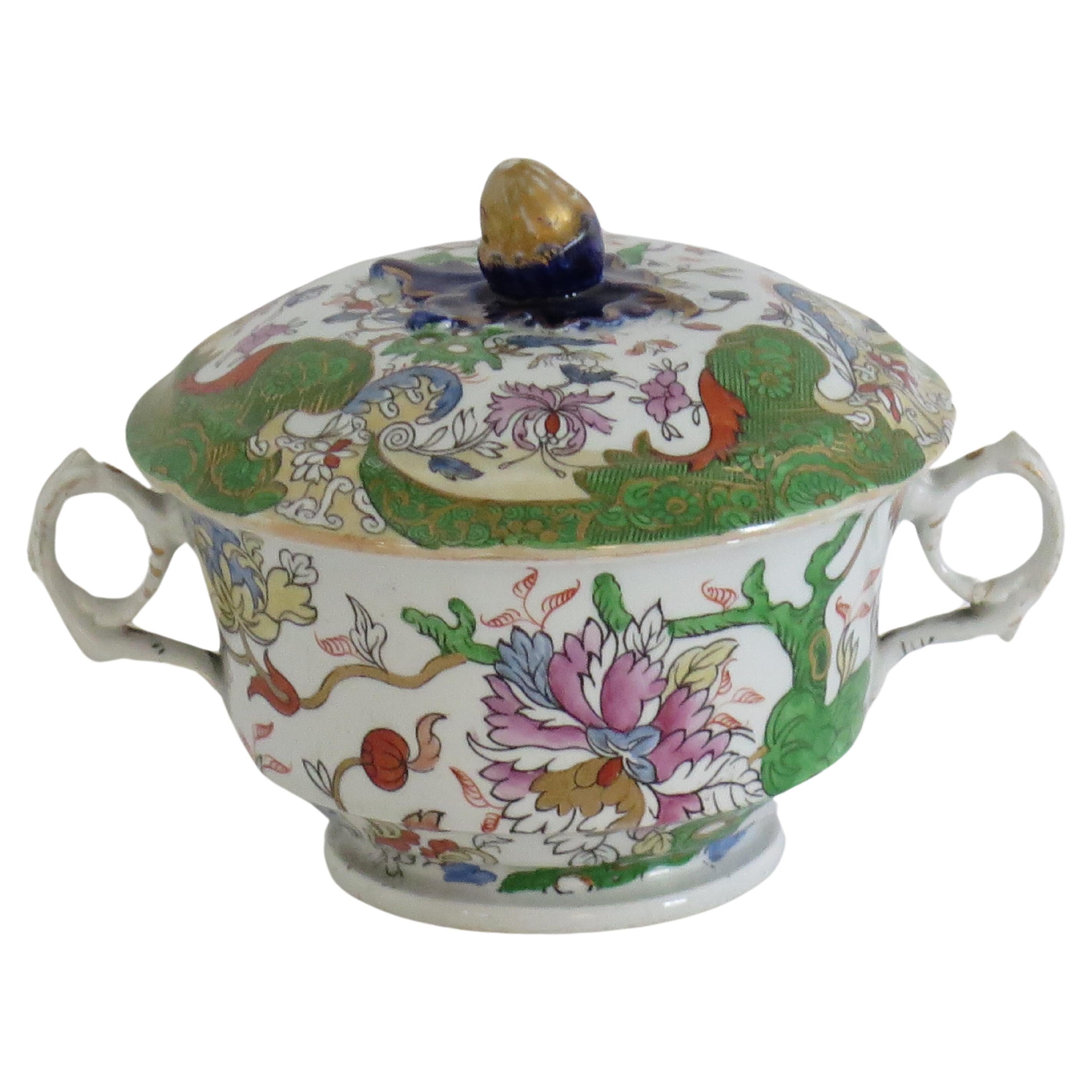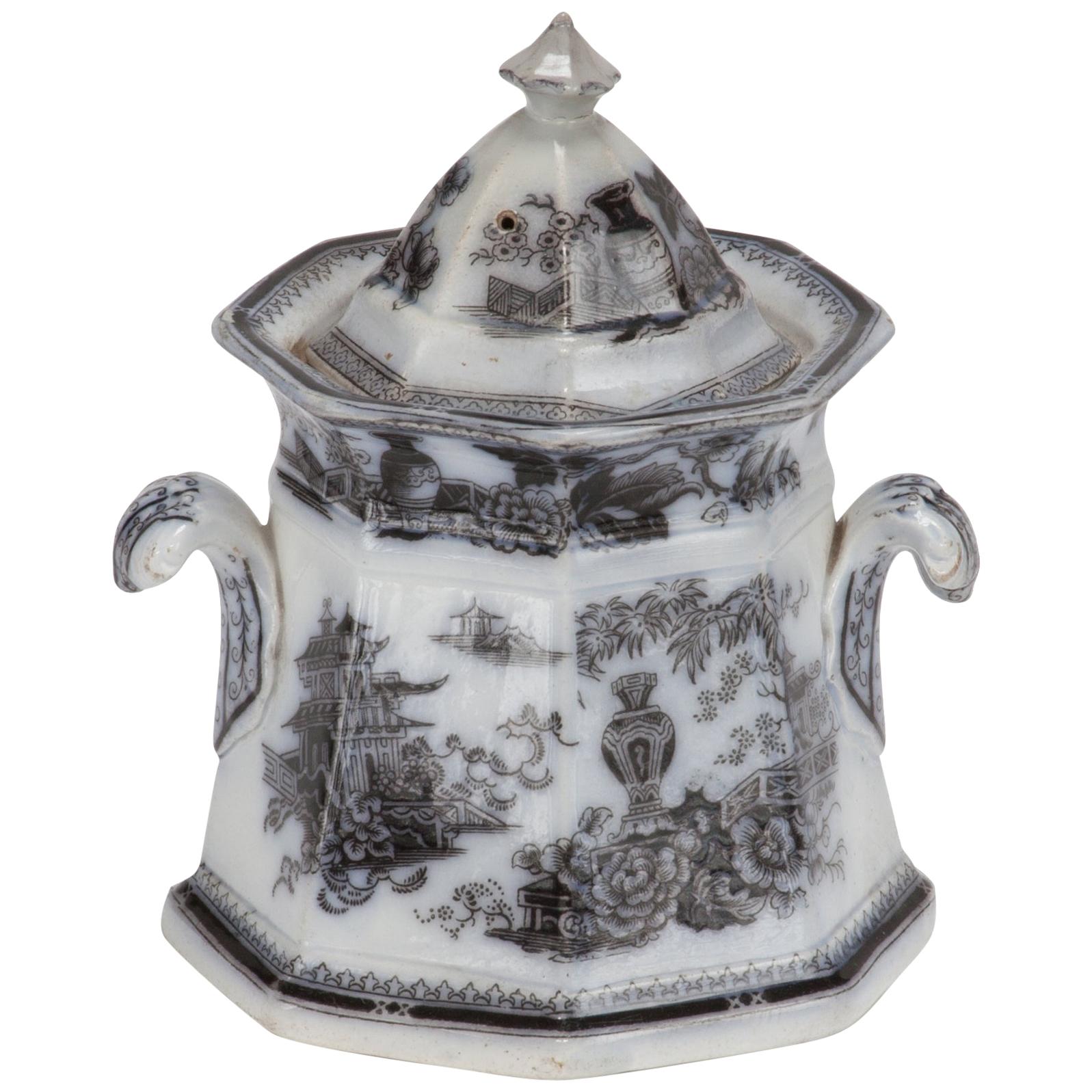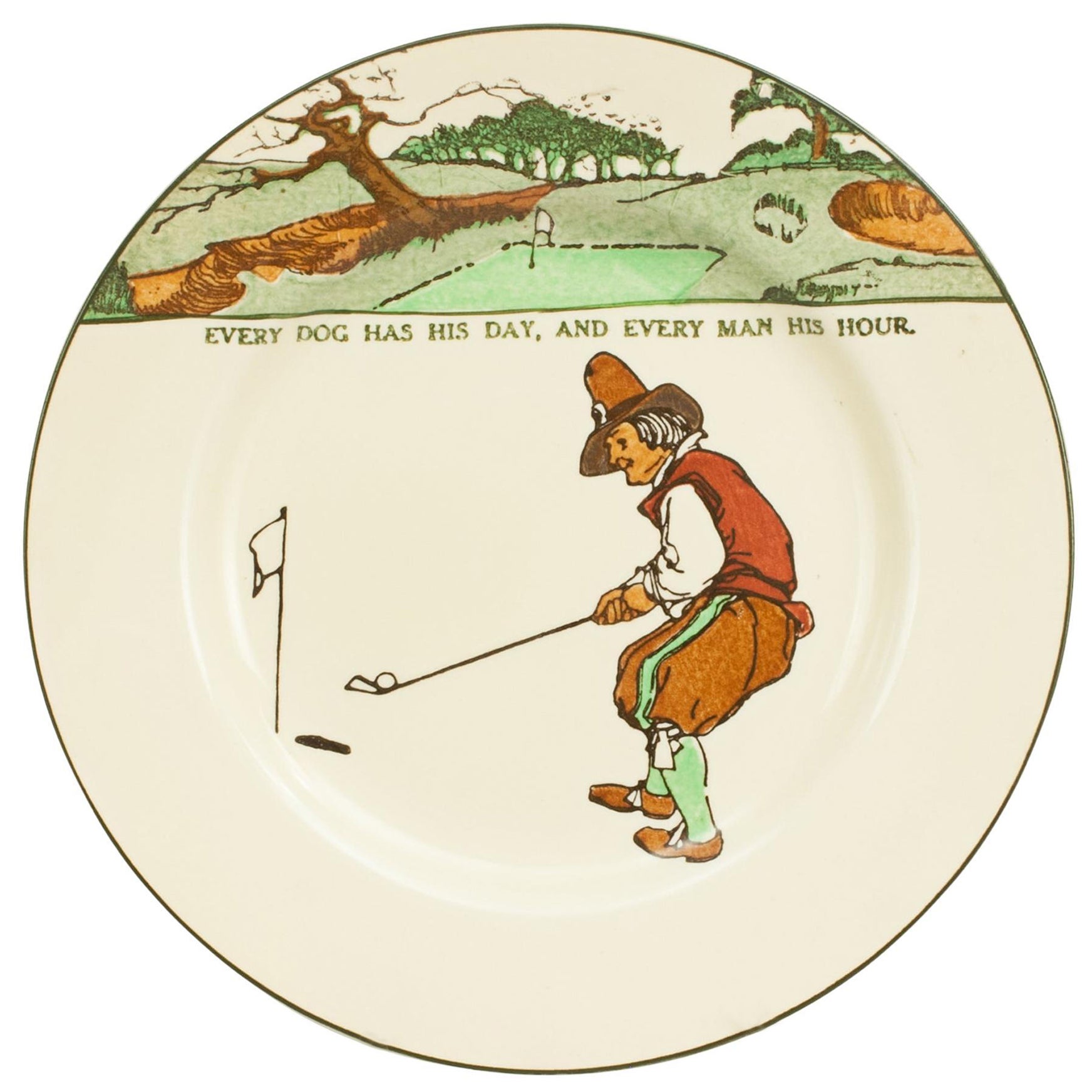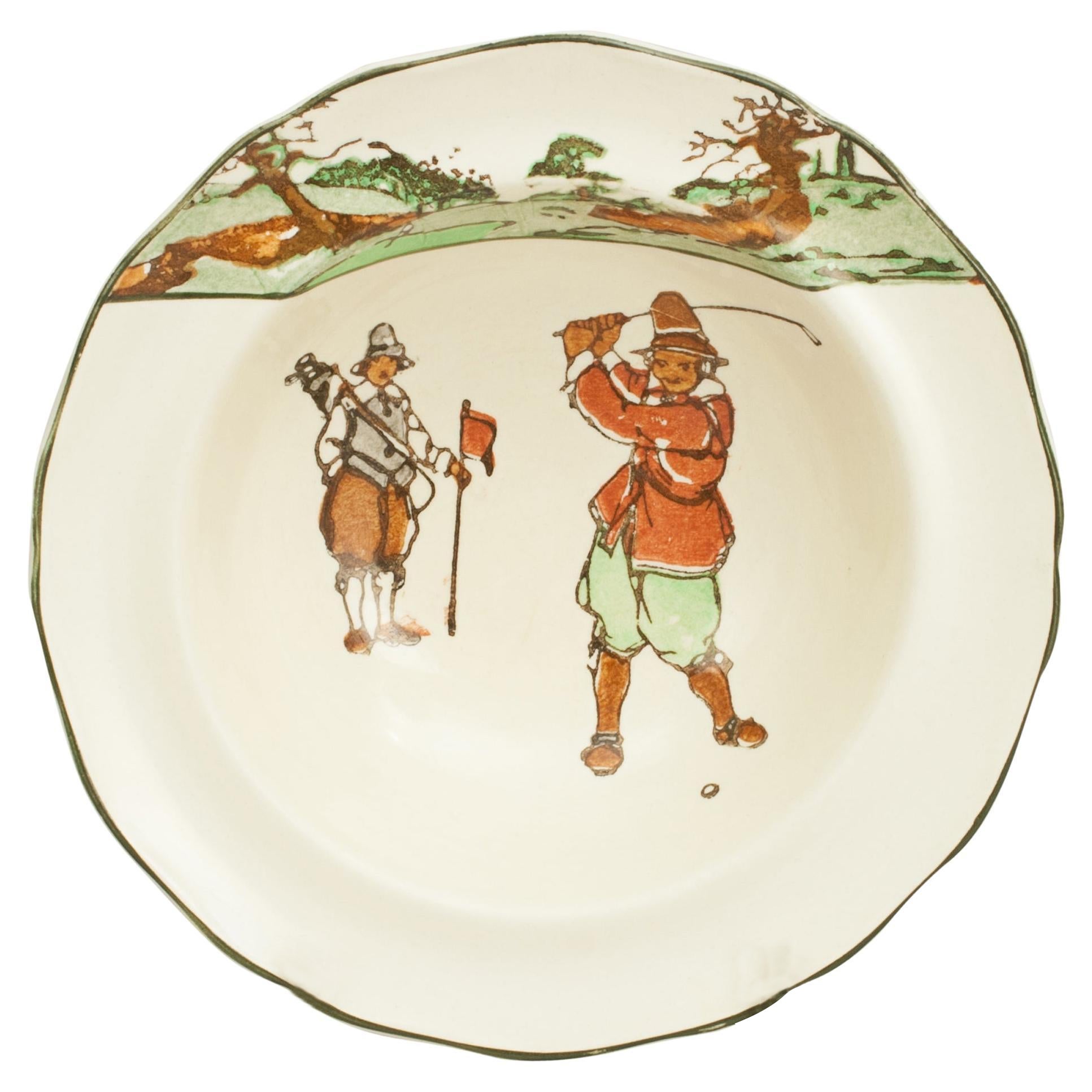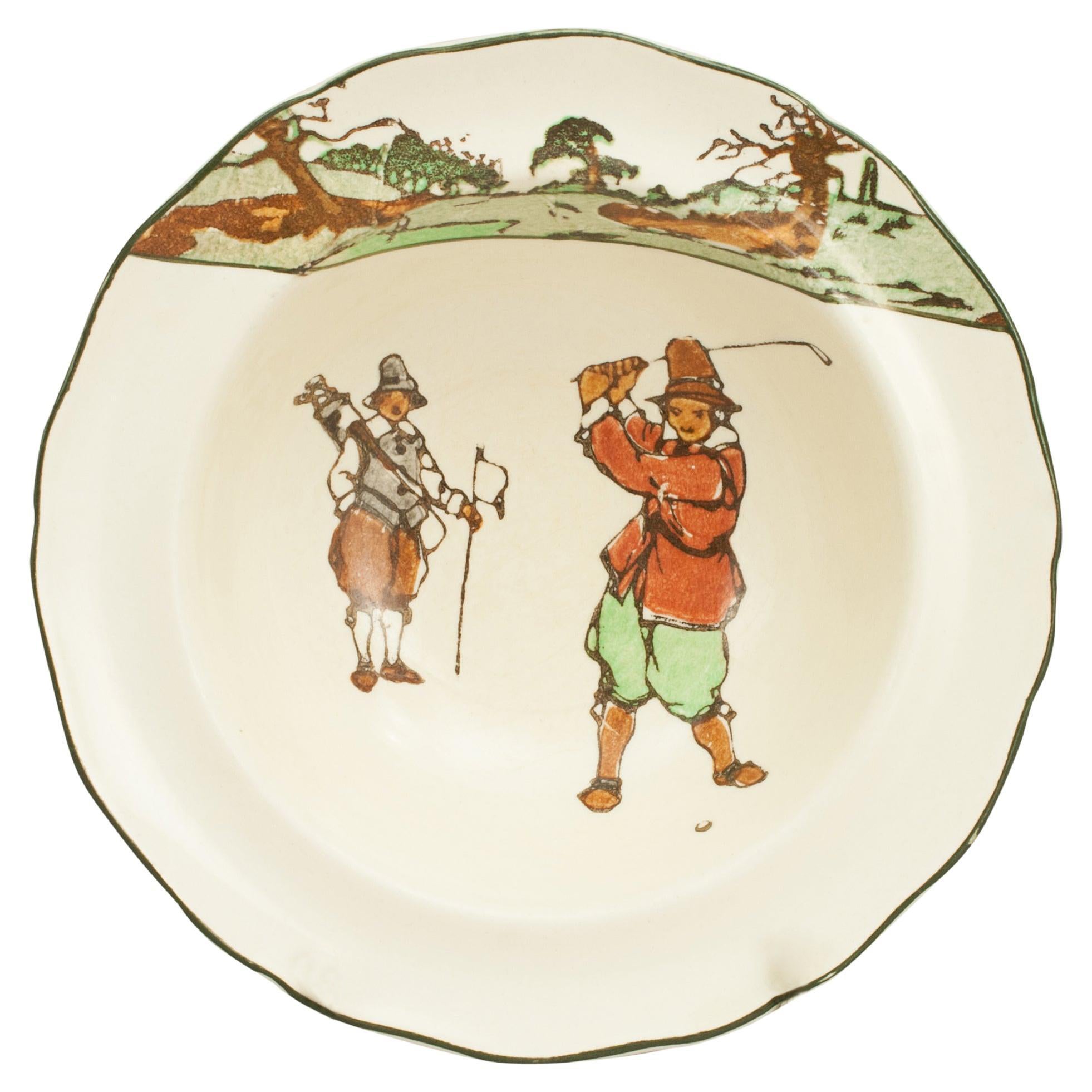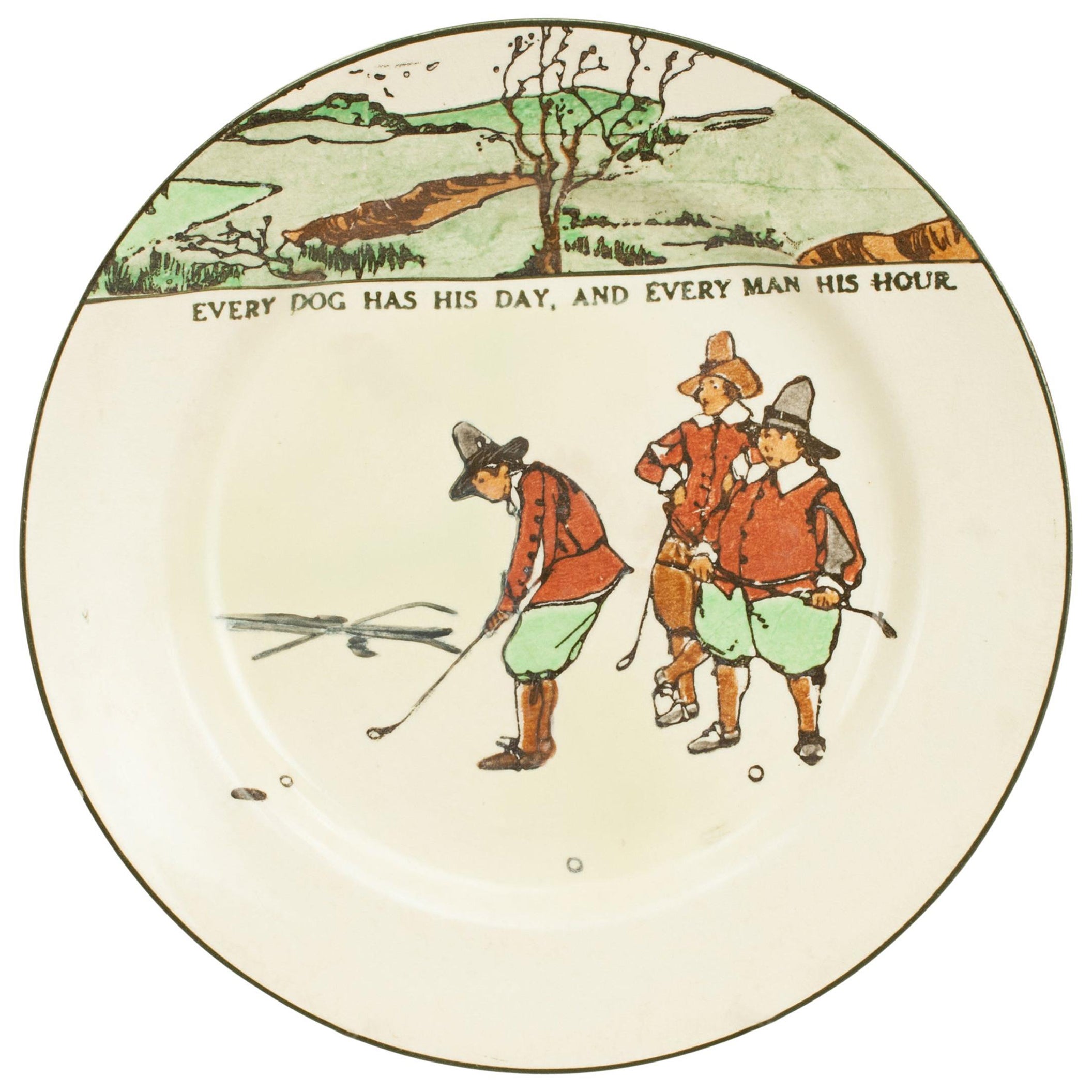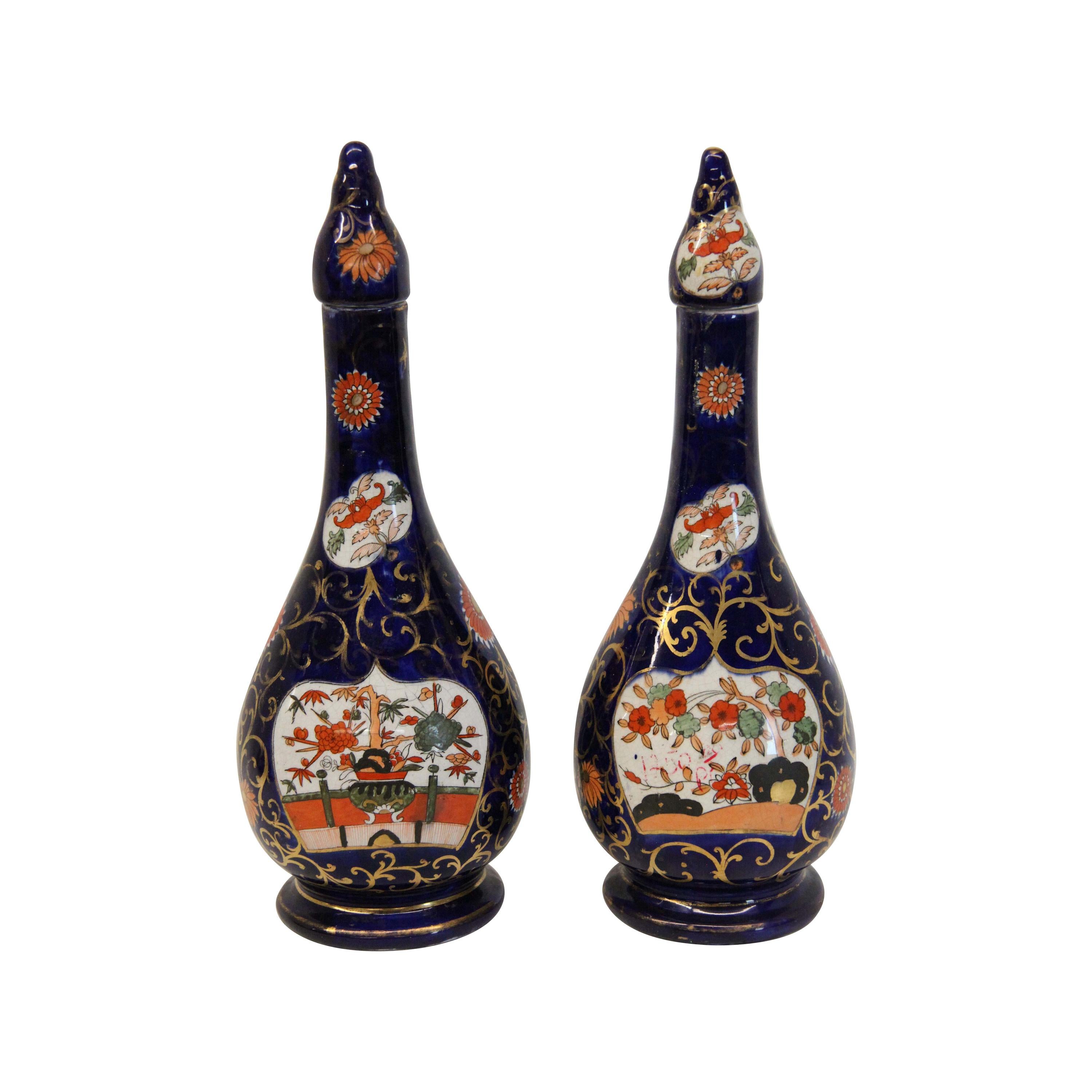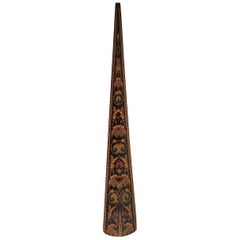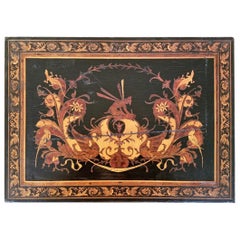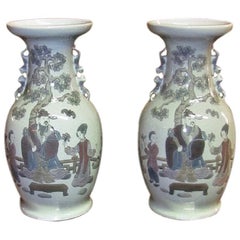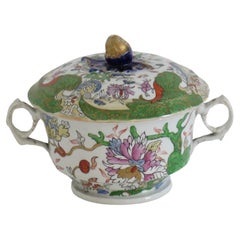
Victoria Ware Ironstone Lidded Tureens of Shipping Scenes
View Similar Items
Want more images or videos?
Request additional images or videos from the seller
1 of 11
Victoria Ware Ironstone Lidded Tureens of Shipping Scenes
About the Item
- Dimensions:Height: 10 in (25.4 cm)Width: 16 in (40.64 cm)Depth: 11 in (27.94 cm)
- Sold As:Set of 2
- Style:High Victorian (In the Style Of)
- Materials and Techniques:
- Place of Origin:
- Period:
- Date of Manufacture:1970
- Condition:Wear consistent with age and use. Near Mint.
- Seller Location:Dallas, TX
- Reference Number:1stDibs: LU3978112110031
About the Seller
4.9
Gold Seller
These expertly vetted sellers are highly rated and consistently exceed customer expectations.
Established in 2015
1stDibs seller since 2018
349 sales on 1stDibs
More From This SellerView All
- Rare 19th Century English Tunbridgeware Hair Pin or SlideLocated in Dallas, TXPresenting an absolutely gorgeous and extremely unique and rare 19th century British Tunbridgeware hair pin/bobbin or slide. This slide is unlike any of it’s kind we have seen before…. it is a very rare survivor ! From circa 1860–1880. Made of walnut with gorgeous marquetry inlay on the entirety of the front with classic Tunbridgeware micro-mosaic all over the front. The rear is walnut. The marquetry inlay appears to be various different woods, namely, maple, walnut and satinwood. Would have been worn in a Lady’s hair bun with the micro-mosaic facing forward. This would have belonged to a very elegant lady in the mid to late 19th century. Tunbridge ware is a form of decoratively inlaid woodwork, typically in the form of boxes, that is characteristic of Tonbridge and the spa town of Royal Tunbridge Wells in Kent in the 18th and 19th centuries. The decoration typically consists of a mosaic of many very small pieces of different coloured woods that form a pictorial vignette. Shaped rods and slivers of wood were first carefully glued together, then cut into many thin slices of identical pictorial veneer with a fine saw. Elaborately striped and feathered bandings for framing were pre-formed in a similar fashion. There is a collection of Tunbridge ware in the Tunbridge Wells Museum and Art Gallery in Tunbridge Wells. The famous makers of Tunbridge ware were in the Tunbridge Wells area of Kent; their most notable work was from circa 1830-1900. Early makers of Tunbridge ware, in Tunbridge Wells in the mid-18th century, were the Burrows family, and Fenner and Co. In the 19th century, around 1830, James Burrows invented a technique of creating mosaics from wooden tesserae. Henry Hollamby, apprenticed to the Burrows family, set up on his own in 1842 and became an important manufacturer of Tunbridge ware, employing about 40 people. Edmund Nye (1797–1863) and his father took over the Fenner company when William Fenner retired in 1840, after 30 years in partnership with him. Thomas Barton (1819–1903), previously apprenticed at the Wise factory, joined the Nyes in 1836, and worked as Nye’s designer; he took over the business in 1863 and continued there until his death. In Tonbridge (near to Tunbridge Wells), George Wise (1703–1779) is known to have had a business in 1746. It continued with his son Thomas, and Thomas’s nephew George (1779–1869), who took over in 1806. In its early years the company made articles such as workboxes and tea caddies with prints of popular views; later items had pictures created from mosaics. Their workshop in Tonbridge, Wise’s Tunbridge Ware Manufactory, was next to the Big Bridge over the Medway; the building was demolished in 1886 to widen the approach to the bridge. Tunbridge ware became popular with visitors to the spa town of Tunbridge Wells, who bought them as souvenirs and gifts. Articles included cribbage boards, paperweights, writing slopes, snuffboxes and glove boxes. At the Great Exhibition of 1851, Tunbridge ware by Edmund Nye, Robert Russell and Henry Hollamby was shown; Edmund Nye received a commendation from the judges for his work. He exhibited a table depicting a mosaic of a ship at sea; 110,800 tesserae were used in making the picture. The manufacturers of Tunbridge ware were cottage industries, and they were no more than nine in Tunbridge Wells and one in Tonbridge. The number declined in the 1880s; competent craftsmen were hard to find, and public tastes changed. After the death of Thomas Barton in 1903 the only surviving firm was Boyce, Brown and Kemp, which closed in 1927. Marquetry was an old technique which was continued by Nye and Barton to create images such as birds or butterflies. ‘Green Oak’ as caused by the fungus Chlorociboria aeruginascens. Stickware and half-square mosaic was invented by James Burrows in about 1830: a bunch of wooden sticks of different colours, each having triangular or diamond-shaped cross section, were tightly glued together; in the case of stickware, the resulting block was dried, then turned to form an article such as the base of a pincushion. For half-square mosaic, thin slices were taken from the composite block, and applied to a surface.[1][2][4] Tesselated mosaic, was a development by James Burrows of half-square mosaic; it was adopted by George Wise and Edmund Nye. Minute tesserae were used to form a wide variety of geometric and pictorial designs. Many sorts of wood were used for the various colours; about 40 were in regular use. Only natural colors were used; green was provided by “green oak”, produced by the action of fungus on fallen oak. Designs for articles were often taken from designs of Berlin wool work.Category
Antique Late 19th Century English High Victorian Collectible Jewelry
MaterialsSatinwood, Walnut
- 19th Century British Tunbridge Ware Lap DeskBy Tunbridge WareLocated in Dallas, TXPresenting an absolutely gorgeous and extremely unique and rare 19th Century British Tunbridge ware lap desk. This lap desk is unlike any of it’s kind we have seen before. From cir...Category
Antique Mid-19th Century English High Victorian Decorative Boxes
MaterialsMaple, Walnut, Satinwood, Ebony, Wood
- Rare Pair of Lladro Porcelain Mandarin VasesBy LladroLocated in Dallas, TXPRESENTING a FANTASTICALLY RARE Pair of Lladro Porcelain ‘Mandarin Vases’. Made circa 1973 and made in Spain by the exceptional maker, Lladro. These two vases were produced and sold individually and were titled “Mandarin Vase”. They were sculpted by Julio Fernandez...Category
Late 20th Century Spanish Mid-Century Modern Ceramics
MaterialsPorcelain
$3,000 / set - Rare Pair of Lladro Chinese Farmer Porcelain FigurinesBy LladroLocated in Dallas, TXPRESENTING a GORGEOUS PAIR of extremely rare and important Lladro, long retired porcelain figurine sculptures. Known as the ‘Chinese Farmer’ and the ‘Chinese Farmer with Staff’. Th...Category
Late 20th Century Spanish Mid-Century Modern Ceramics
MaterialsPorcelain
$2,720 Sale Price / set43% Off - Pair of 19th Century Limoges Monvoisin Porcelain FigurinesLocated in Dallas, TXPresenting a stunning pair of mid to late 19th century French Limoges Bisque porcelain figurines from circa 1870. One is of a lady in period dress/attire cradling a Dove. All hand-painted and decorated to the finest quality. The base is marked with the makers initials “C.H.”. She is made of fine bisque porcelain in the Old Paris porcelain style. The other is of a gentleman set...Category
Antique 19th Century French Louis XVI Figurative Sculptures
MaterialsPorcelain, Paint
- Flemish Salt Glazed Pottery Beer Ewer ft Story of Susanna 1584Located in Dallas, TXVery rare flemish pottery beer jug or stein…..depicting the Story of Susanna and dated 1584. The original jug has been attributed to Engel Kran…..a ...Category
Antique Early 19th Century German Renaissance Pitchers
MaterialsPottery
You May Also Like
- Georgian Mason's Ironstone Sauce Tureen & Lid Gilded Water Lily Pattern, Ca 1820By Mason's IronstoneLocated in Lincoln, LincolnshireThis is a superb Ironstone Sauce Tureen, complete with lid , made by Mason's of Lane Delph, Staffordshire, England, during the early part of the 19th century, circa 1820. This tureen is well potted and is hexagonal in shape with moulded animal head handles to the base and a flower head knob to the lid. The pattern is called "Water Lily" and is a well known Mason's pattern, as illustrated on pages 136 in The Mason's collectors Club book " A Guide to Mason's patent Ironstone patterns, c 1813 to c 1848" . This particular piece is the gilded version of the pattern and has heavily applied hand gilded highlights. Tureens of the same shape and period are illustrated on Pages 145 and 155 of Godden's Guide to Mason's China and the Ironstone Wares published by the Antique Collectors' Club. The pattern is beautifully hand painted over a printed pattern with bold enamels of Cobalt Blue, burnt orange, green, puce all in various shades with much additional hand gilding. The pieces are unmarked as was often the case if the item had formed part of a large dinner or desert service...Category
Antique Early 19th Century English Chinoiserie Ceramics
MaterialsIronstone
- Late Georgian Mason's Ironstone Sauce Tureen & Lid Gilded Tree Peony Ptn, Ca1830By Mason's IronstoneLocated in Lincoln, LincolnshireThis is a very decorative Ironstone Sauce Tureen, complete with lid , made by Mason's of Lane Delph, Staffordshire, England, during the late Georgian period of the early part of the 19th century, circa 1830. This tureen is well potted with a circular shape having two side ring...Category
Antique Early 19th Century English Georgian Ceramics
MaterialsIronstone
- Small Transfer Ware Pot with LidLocated in Los Angeles, CASmall Victorian transfer-ware pot with black ink and beveled lid. The Chinoiserie motif depicts a cascade of temples, urns, and flowers. Would serve equally well for both practical a...Category
Antique 19th Century English Victorian Ceramics
MaterialsCeramic
- Royal Doulton Golf Plate, Series WareBy Royal DoultonLocated in Oxfordshire, GBRoyal Doulton Series Ware Golf plate. Royal Doulton rack plate with polychrome golf scene and the proverb, "EVERY DOG HAS HIS DAY, AND EVERY MAN HIS HOUR", designed by Charles Crombie. The rear of the plate with Royal Doulton trade mark, pattern No. D3395 and impressed into the plate '4.33'. Charles 'Chas' Crombie (1885 - 1967) was an illustrator whose work is well known to the collector. His pictures can be found in many forms, on postcards, calendars, in books and on Royal Doulton ceramics. Royal Doulton Golf...Category
Vintage 1910s English Ceramics
MaterialsCeramic
- Royal Doulton Golf Bowl, Series WareBy Royal DoultonLocated in Oxfordshire, GBRoyal Doulton Series Ware Golf bowl. Royal Doulton bowl with polychrome golf scene designed by Charles Crombie. The bottom of the bowl with Royal Doul...Category
Vintage 1910s English Sporting Art Ceramics
MaterialsCeramic
- Royal Doulton Golf Bowl, Series WareBy Royal DoultonLocated in Oxfordshire, GBRoyal Doulton Series ware Golf bowl. Royal Doulton bowl with polychrome golf scene designed by Charles Crombie. The bottom of the bowl with Royal Doul...Category
Vintage 1910s English Sporting Art Ceramics
MaterialsCeramic
Recently Viewed
View AllMore Ways To Browse
Vintage China Pottery And Glass
Vintage China Ware
Victorian Ironstone
Lidded Tureens Chinese
Retro Tureen With Lid
Blue And White Ironstone
Ironstone Tureen Lid
Victoria Ware
White Ironstone China
Chinese Blue And White Tureen
Ironstone Ware
Retro White Ironstone
Chinese Export Tureen Blue And White
Vintage Ironstone China
Victoria Ware Ceramic
Vintage Ironstone Pottery
Vintage Ironstone Pottery And Glass
Ironstone Victoria

